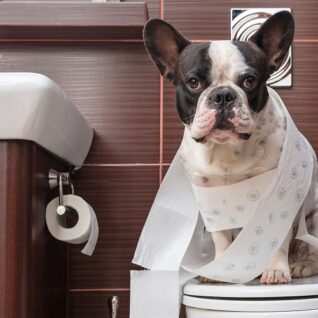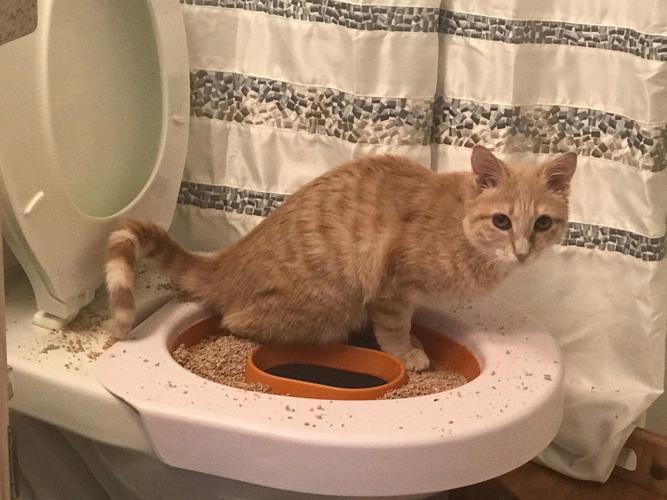What You Have to Avoid Flushing Animal Waste Down the Toilet
What You Have to Avoid Flushing Animal Waste Down the Toilet
Blog Article
The writer is making a few good pointers on the subject of Should you flush animal waste down the toilet as a whole in this content just below.

When it involves dealing with waste, particularly animal waste, many people usually consider the convenient choice of flushing it down the toilet. Nevertheless, this seemingly very easy service can have severe consequences for the environment and public health. In this write-up, we'll check out why flushing animal waste down the commode is a poor idea and provide different techniques for appropriate disposal.
Introduction
Correct waste disposal is critical for maintaining environmental sustainability and public health. While it may seem harmless to purge animal waste down the commode, it can result in various concerns, both for the setting and human well-being.
Dangers of flushing pet waste
Environmental influence
Purging pet waste introduces unsafe microorganisms and pathogens right into rivers, which can adversely impact marine environments. These virus can infect water resources and harm marine life, disrupting fragile ecological communities.
Public health issues
Animal waste contains harmful microorganisms such as E. coli and Salmonella, which can present major health and wellness threats to people. Flushing pet waste down the bathroom can pollute water supplies, bring about the spread of illness and infections.
Alternatives to flushing
Rather than flushing animal waste down the toilet, there are several alternative disposal techniques that are a lot more eco-friendly and sanitary.
Composting
Composting pet waste is an eco-friendly means to throw away it. By composting, organic matter is broken down right into nutrient-rich soil, which can be used to feed yards and plants.
Land fill disposal
Disposing of animal waste in a land fill is an additional alternative. While not as eco-friendly as composting, it is a much safer choice to flushing, as it stops the contamination of water sources.
Pet dog waste disposal systems
There are customized animal garbage disposal systems available that safely and hygienically deal with pet waste. These systems typically use enzymes to break down waste and get rid of odors.
Actions to appropriate animal garbage disposal
To make sure correct disposal of pet waste, adhere to these actions:
Scooping and bagging waste
Regularly scoop and bag pet waste using eco-friendly bags. This protects against waste from contaminating the environment.
Using marked waste containers
Dispose of bagged pet waste in marked waste containers, such as garden compost containers or land fill bins. Stay clear of flushing it down the commode at all expenses.
Cleaning litter boxes and pet locations frequently
Regularly clean can and pet areas to stop the accumulation of waste and germs. Use pet-safe cleansing products to keep health.
Benefits of proper disposal methods
Embracing proper disposal methods for animal waste supplies numerous benefits:
Decreased environmental pollution
Appropriate disposal techniques minimize the risk of environmental pollution, protecting rivers and communities from contamination
Minimized danger of water contamination.
By preventing flushing animal waste down the toilet, the danger of water contamination is dramatically decreased, protecting public health.
Boosted sanitation and hygiene
Proper disposal techniques advertise better hygiene and hygiene, producing a safer atmosphere for both human beings and pets.
Conclusion
In conclusion, flushing animal waste down the commode is dangerous to the setting and public health. By taking on alternative disposal methods and complying with correct waste administration techniques, we can decrease the unfavorable impact of pet waste and add to a cleaner, healthier planet.
What To Do With Dog Poo – The Do's And Don'ts Of Disposing Of Faeces
Dog poo bins
Some councils provide dedicated dog waste bins in popular dog-walking areas that can take dog poo that has been bagged but you can legally dispose of dog waste in any public litter bin, as long as it is securely bagged. This also applies to your wheelie bin at home.
Do not flush
Water companies do not recommend flushing dog faeces down the toilet because certain parasites can survive the water processing treatment and are potentially harmful to humans. You should also never consider flushing dog poo that has been bagged down the toilet as the bags will not break down and instead create severe blockages in the sewage system.
In the woods
The Forestry Commission promotes a ‘stick and flick’ method for dealing with waste in the woods. This means finding a stick and using it to flick any poo from off the path so that it is out of the way of other walkers. You could also bury it as long as it is not in an area where there might be livestock.
Livestock
Parasites found in dog poo can be transmitted to livestock if they inadvertently eat infected faeces that has been left on grazing land. This could result in the death of sheep or abortion in cattle so you should always make sure you pick up your dog’s waste in fields where livestock could be present.

Regularly clean can and pet areas to stop the accumulation of waste and germs. Use pet-safe cleansing products to keep health.
Benefits of proper disposal methods
Embracing proper disposal methods for animal waste supplies numerous benefits:
Decreased environmental pollution
Appropriate disposal techniques minimize the risk of environmental pollution, protecting rivers and communities from contamination
Minimized danger of water contamination.
By preventing flushing animal waste down the toilet, the danger of water contamination is dramatically decreased, protecting public health.
Boosted sanitation and hygiene
Proper disposal techniques advertise better hygiene and hygiene, producing a safer atmosphere for both human beings and pets.
Conclusion
In conclusion, flushing animal waste down the commode is dangerous to the setting and public health. By taking on alternative disposal methods and complying with correct waste administration techniques, we can decrease the unfavorable impact of pet waste and add to a cleaner, healthier planet.
What To Do With Dog Poo – The Do's And Don'ts Of Disposing Of Faeces
Dog poo bins
Some councils provide dedicated dog waste bins in popular dog-walking areas that can take dog poo that has been bagged but you can legally dispose of dog waste in any public litter bin, as long as it is securely bagged. This also applies to your wheelie bin at home.
Do not flush
Water companies do not recommend flushing dog faeces down the toilet because certain parasites can survive the water processing treatment and are potentially harmful to humans. You should also never consider flushing dog poo that has been bagged down the toilet as the bags will not break down and instead create severe blockages in the sewage system.
In the woods
The Forestry Commission promotes a ‘stick and flick’ method for dealing with waste in the woods. This means finding a stick and using it to flick any poo from off the path so that it is out of the way of other walkers. You could also bury it as long as it is not in an area where there might be livestock.
Livestock
Parasites found in dog poo can be transmitted to livestock if they inadvertently eat infected faeces that has been left on grazing land. This could result in the death of sheep or abortion in cattle so you should always make sure you pick up your dog’s waste in fields where livestock could be present.

I was introduced to that write-up about Don't Flush Your Pets Poo Down The Loo, Vet Warns from someone on a different website. For those who liked our blog posting if you please be sure to pass it around. Thank-you for taking the time to read it.
Additional Information Report this page